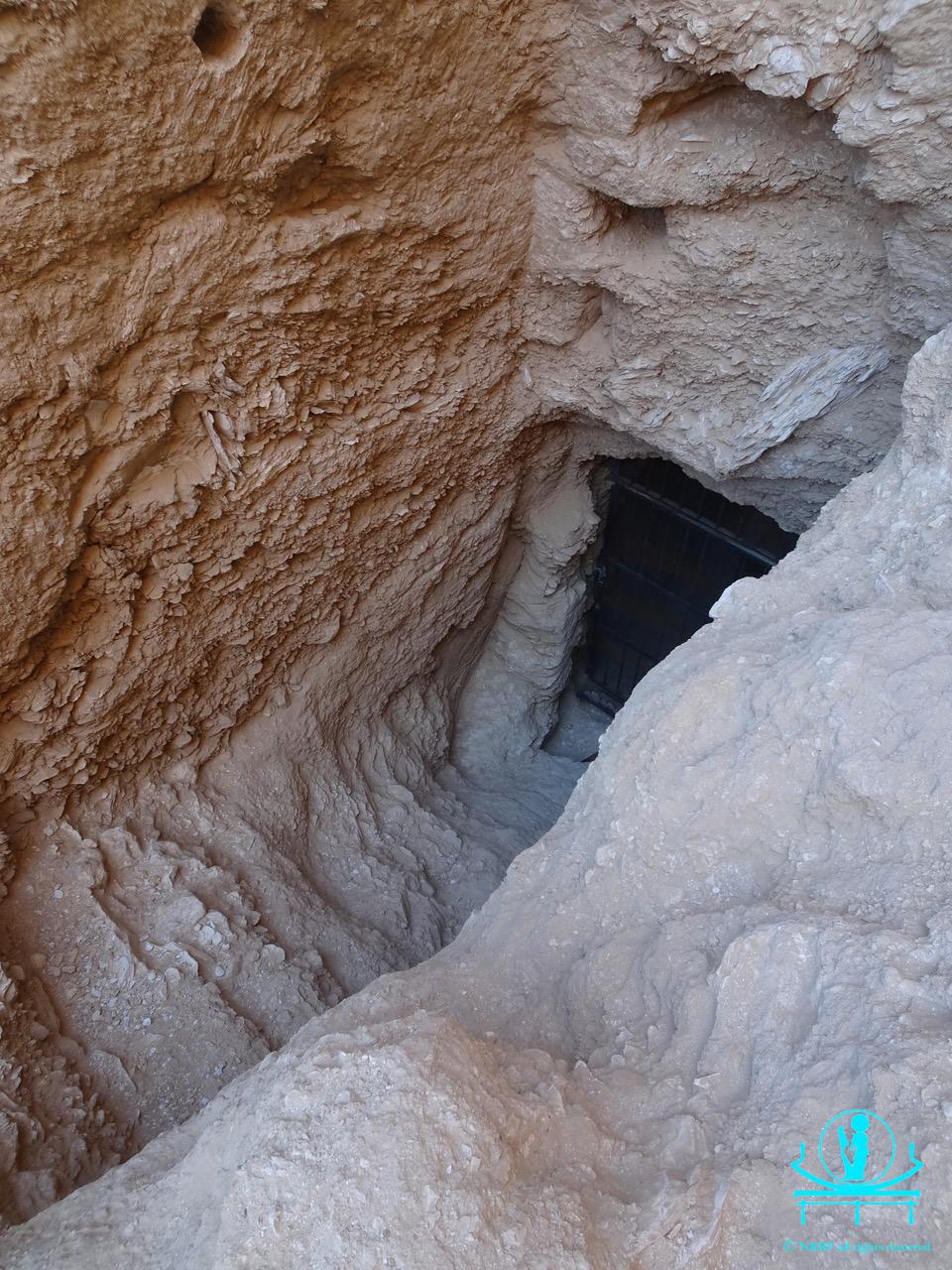The New Kingdom Research Foundation (NKRF), which is headed by Dr. Piers Litherland and affiliated to the McDonald Institute for Archaeological Research at Cambridge University, has been working in joint-venture with the Ministry of Tourism and Antiquities in the Western Wadis, the Wadi Bariyah, the Wadi al Agaala and Wadi 300 for over thirteen years.
In October, 2022, the mission discovered, in an unexpected location in the Wadi Gabbanat al Qurud in the Western Wadis, a previously unknown and large royal tomb apparently containing multiple burials. The tomb seems not to have been entered since the Third Intermediate Period but repeated flooding had completely filled the main axis of the tomb with concrete-hard debris and had caused the ceilings of the tomb to weaken and collapse.

Entrance to the new royal tomb discovered in Wadi C.
After several years of excavations, the joint Egyptian-British mission announced on February 18, 2025 that its finds confirmed that Wadi C4 belonged to Thutmes II, the lone 18th Dynasty king whose tomb had not been previously identified. Wadi C-4 was first discovered in 2022, the first royal tomb to be found in Luxor since Howard Carter’s discovery of Tutankhamen’s tomb, KV 62, in the Valley of the Kings exactly one hundred years earlier. Evidence pointing to Thutmes II includes objects with inscriptions naming the deceased king and his wife and half-sister Queen Hatshepsut, though the king’s burial is missing. Piers Litherland, field director and head of the mission, noted the architectural design of the tomb was a model for later royal tombs of the 18th dynasty but featured an unusual second corridor to the burial chamber that may have been cut to remove the funerary equipment at Hatshepsut’s behest after the tomb was damaged by flooding in antiquity.
Litherland further announced a week later that the mission has identified the possible location of an unexcavated tomb close to Wadi C-4, and speculated it could be the final resting place of Thutmes II’s relocated funeral assemblage. If an intact royal tomb is indeed found beneath the layers of rock and plaster deliberately placed by ancient workers, it would be one of the most significant Egyptological finds in decades. Work to clear the site is expected to take several months.
Last modified on April 7, 2025
Published or last modified on April 7, 2025
